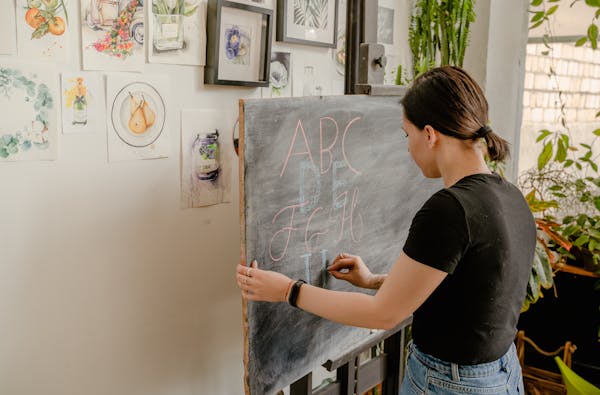Introduction:
Teaching, at its core, is the act of guiding someone through
the journey of understanding and mastering new concepts, skills, or knowledge.
It's a profoundly human endeavor that goes beyond the mere transfer of
information. In human words, teaching is about connection, inspiration, and
transformation.
The Heart of Teaching: Connection
At the heart of teaching lies the connection between the
teacher and the learner. This connection is not just about ensuring that
information flows from one mind to another. It’s about creating a relationship
built on trust, respect, and empathy. When a teacher understands the needs,
interests, and potential of their students, they can tailor their approach to
make learning more meaningful and effective.
Consider a teacher in a kindergarten classroom. They don’t
just deliver lessons; they observe how each child reacts to different
activities. They notice who gets excited by storytelling, who loves hands-on
experiments, and who might need a bit more encouragement. By connecting with
their students on a personal level, they make learning a joyous and engaging
process.
Inspiration: Lighting the Spark
Teaching is not just about imparting knowledge; it's about
lighting a spark of curiosity and a passion for learning. Great teachers
inspire their students to explore, question, and discover. They do this by
sharing their own enthusiasm and by creating an environment where curiosity is
encouraged and nurtured.
Think of a high school science teacher who brings in
real-world applications of scientific concepts. Instead of merely explaining
the laws of physics, they might demonstrate how these laws apply to sports, car
crashes, or even amusement park rides. By linking lessons to real-life
experiences, they ignite students’ interest and make abstract concepts tangible
and exciting.
Transformation: Beyond the Classroom
Teaching has the power to transform lives. It equips
students with the tools they need to navigate the world, solve problems, and
contribute to society. This transformative aspect of teaching goes beyond
academic achievements; it’s about shaping individuals who can think critically,
act ethically, and collaborate effectively.
Consider the role of a mentor who guides a young person
through their career choices. This mentor doesn’t just provide advice; they
help the mentee see their own potential, set realistic goals, and build the
confidence to pursue their dreams. The impact of such guidance can be profound,
leading to personal and professional growth that lasts a lifetime.
The Human Element: Patience and Adaptability
One of the most human aspects of teaching is the need for
patience and adaptability. Every learner is unique, with their own pace, style,
and challenges. Effective teachers recognize this diversity and adapt their
methods to meet the individual needs of their students.
For instance, in a mixed-ability classroom, a teacher might
use differentiated instruction strategies. They might offer multiple ways for
students to engage with the material, such as visual aids for visual learners,
hands-on activities for kinesthetic learners, and discussion groups for
auditory learners. This flexibility ensures that all students have the
opportunity to succeed.
The Role of Feedback
Feedback is a crucial component of teaching. It’s not just
about correcting mistakes; it’s about guiding learners towards improvement and
growth. Constructive feedback helps students understand where they went wrong,
why, and how they can do better next time. It’s a delicate balance of critique
and encouragement, aimed at building confidence and competence.
Imagine a writing instructor who provides detailed feedback
on a student’s essay. Instead of simply pointing out errors, they might
highlight strong points, suggest improvements, and explain why certain changes
can enhance the overall piece. This type of feedback fosters a growth mindset,
encouraging students to see learning as a continuous, iterative process.
The Joy of Teaching
Ultimately, teaching is a joyful act. The joy comes from
seeing the spark of understanding in a student’s eyes, from witnessing their
progress and achievements, and from knowing that you’ve played a part in their
journey. It’s a profession that requires dedication, passion, and a deep love
for both the subject matter and the act of teaching itself.
In conclusion, teaching in human words is about more than
disseminating knowledge. It’s about connecting with learners, inspiring
curiosity, transforming lives, adapting to individual needs, providing
constructive feedback, and finding joy in the process. It’s a dynamic and
deeply rewarding endeavor that touches hearts and shapes minds, paving the way
for a brighter future.





if you have any doubt please let me know